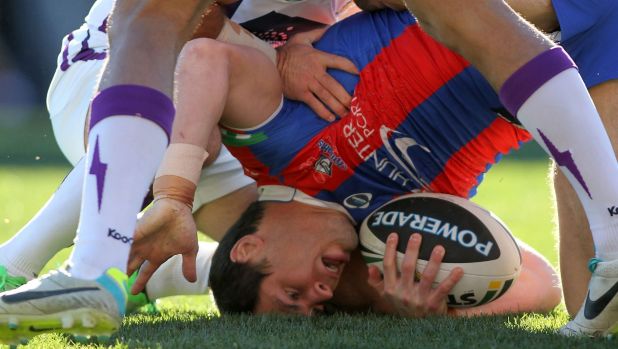By BTLawyers
As the NRL season in Australia kicks off for another year, there is one thing that we can be guaranteed to see on the field several times before the season ends – players experiencing a concussion.
Due to the nature of contact sports, concussions are inevitable – independent research undertaken by the NRL and AFL in Australia reveals that the incidence rate for concussions is about 5 to 6 per 1000 player hours. While in the past they may have just been considered ‘part of the game’, some recent legal claims are shining a light on how sporting bodies should better manage and treat concussion, and what their level of liability is for players who experience ongoing physical and psychological issues as a result of concussions received while on the field.
In the USA, the National Football League (NFL) have tentatively settled a class action for $765 million filed by and on behalf of former players who suffered concussion-related brain injuries as a result of head injuries they suffered during their careers. Closer to home here in Australia, former Newcastle Knights winger James McManus is suing the Newcastle Knights football club for ongoing health issues he relates to concussion injuries suffered during his career.
What is a concussion, and how should sporting bodies manage it?
A concussion is a brain injury and is defined as a complex pathophysiological process affecting the brain, induced by biomechanical forces. When someone gets concussed, some of the symptoms they might experience include a loss of consciousness, headaches, irritability, cognitive impairment and sleep disturbance. The majority (80 – 90%) of concussions resolve in a short (7 – 10 day) period.
Common causes of concussion include direct blows to the head, neck and face, which means it is not an uncommon occurrence in a contact sport. Because of this, in November 2012 at the 4th International Conference on concussion in sport in Zürich, a consensus paper was agreed which outlined some recommendations for sporting bodies in managing concussion in players. The key recommendations for managing a concussed plater included:
- Evaluation: the player should be evaluated by a physician or licensed healthcare provider on-site.
- Timeliness: the player must be evaluated in a timely manner. If no healthcare provider is available, the player should be safely removed from practice or play with an urgent referral to a physician arranged.
- Testing: once immediate first-aid issues are addressed, an assessment of the concussive injury should be made.
- Monitoring: a player should not be left alone following injury and serial monitoring for deterioration is essential over the initial few hours following injury.
- Exclusion: if a player fails the concussion test, they are not permitted to return to play on that day.
The paper also makes special consideration of children and adolescent athletes, and in particular, notes that children below the age of 13 years’ report different symptoms from adults and require age-appropriate assessments.
Interestingly, the consensus paper found no reliable evidence to prove that the use of protective equipment such as headgear and mouthguards will prevent concussion.
The NRL, AFL, and ARU policies on concussion
In Australia, the NRL and AFL guidelines on managing concussion closely follow the recommendations from the Zürich paper. Both codes require any player who is suspected of suffering from concussion to be removed from the field and to undergo an immediate medical assessment.
They also recommend that a pre-game checklist be completed to make sure the appropriate medical services such as local doctors, medical centres and emergency departments are on hand in the event of a concussion.
The ARU’s guidelines are also closely aligned to the Zurich paper, with the ARU prohibiting any player suspected of concussion from returning to the field unless they’re clear to return under an Advanced Care Pathway protocol although this is only available to the elite levels of the sport.
Enforcement of the policies and practical changes in sport
At a local level, sporting bodies are making significant efforts to ensure their policies are being followed and enforced. The NRL, for example, made it clear to clubs that they will not tolerate any breach of the concussion policy when Todd Greenberg, the NRL CEO, recently issued fines to three teams totalling $350,000 for potential breaches of their policy.
At a global level, World Rugby has implemented strict rule changes with respect to tackles around the head. In the past, such infringements were generally dealt with as a caution, however now a tackle around the head will in most cases result in a red card or the player getting sent off. The infringement will also result in a suspension following the game. Their focus has been to reduce any contact with a player’s head.
The Zürich paper suggests that fair play be prioritised in all sports to limit the risk of concussion through violent play.
How will your club’s liability be assessed?
If like the Newcastle Knights, you find yourself in Court over a concussion injury, the basic issues in any action are likely to include:
- Whether the employer is negligent: The policies of the club to identify and manage concussions will be examined to determine this question, however, the changes made to the management of concussion following the release of the Zürich paper might suggest that the concussion protocols were not ideal prior to 2012.
- Whether the negligence was causative of the injuries: Long-term effects of a concussion are rare and are often associated with dizziness, irritability and some behavioural changes. Given the rare nature of the long-term effects of concussion and the general symptoms associated with it, this may prove to be a very challenging issue.
- Whether the risk of injury was reasonably foreseeable at that time: Per the Zürich paper, 80 or 90% of concussions resolve within 7 – 10 days. Therefore, it is difficult to see how a club could have foreseen any long-term impacts from what is commonly accepted to be a short-term injury.
- Floodgates principle: A positive finding in contentious circumstances like this could open the floodgates for claims against sporting bodies. The research around long-term concussion is evolving. It is not a condition which can be identified by radiological investigation for example, and the generic nature of the symptoms (headaches, dizziness, irritability) have multiple causes in everyday life.
What should sporting clubs do to minimise their risks?
In order to minimise both the risk of longer-term injury to a player as a result of a concussion, and to minimise your club’s risk for future liability, all sporting clubs should:
- Have a clear policy on concussion management.
- Ensure that all personnel and players are aware of the policy.
- In assessing concussion, be proactive – if in doubt, sit them out.
- Refer the player for medical examination as soon as possible.
- Document the occurrence.
- Ensure that the player cannot return until they provide a medical clearance to do so.
A key challenge for any amateur club when dealing with a concussion is having the player examined by a medical practitioner as soon as practicable. Some clubs are fortunate enough to have a paramedic booked out for the day but others can address this issue by simply having the contact details of the surrounding medical providers handy so that a referral can be made quickly.
Is McManus the tip of the iceberg?
The McManus action will be the test case on how the law will respond to concussion injures in Australia and is likely to have a significant impact on all sporting codes in Australia. Only time will tell if this case is simply the tip of the iceberg. In the meantime, clubs at all levels should focus on the recommendations of the Consensus Paper on Concussion in to improve the safety of contact sports at all levels of participation and look for opportunities to partner with other clubs and various sporting codes in achieving this goal.






